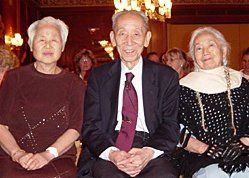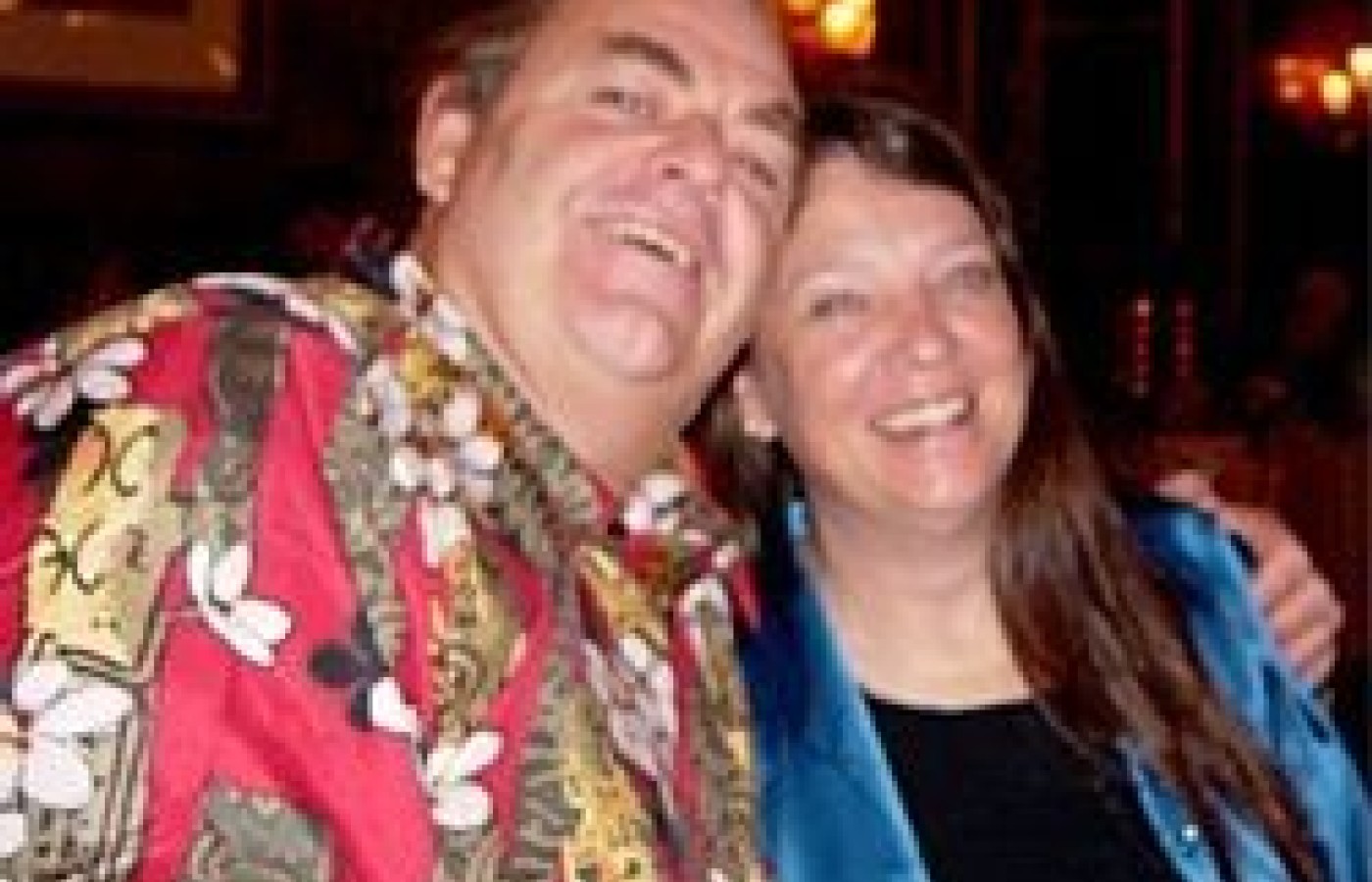Whether you accept it, avoid it or live somewhere in between, insurance coverage has become a defining issue for our profession. Patients increasingly expect to use their benefits, practitioners want to be compensated fairly for their time and expertise, and the system itself remains – at best – fragmented. The encouraging news is that coverage has expanded in meaningful ways. The challenging news is that reimbursement, across the board, remains inadequate.
A Bird's-Eye View of the AOBTA National Convention
The American Organization for Bodywork Therapies of Asia's (AOBTA) 2003 national convention was held from August 29 to September 1 at the Boston Park Plaza Hotel in Boston, Massachusetts. A record number of over 250 participants and exhibitors swirled around the mezzanine floor in the historic hotel to set up workshops; buy and sell products; organize special committee meetings; and network with fellow practitioners.
AOBTA President Debra Howard inspired us all by rallying more grassroots activism, which maintained the convention's "Taking Flight" theme during her welcoming breakfast address on the 29th. The supercharged qi and sense of involvement and fun didn't let up from the moment President Howard spoke until the convention ended.
During her address, President Howard congratulated everyone for achieving the AOBTA's five-year plan in less than three years. She also welcomed medical qigong (MQG) into the AOBTA family, which means MQG graduates who fulfill all of the necessary requirements can now apply for AOBTA certification as practitioners and instructors, and sit for the NCCAOM ABT exam. The AOBTA also welcomed Maryland as a brand new state chapter.
Reflecting the spirit of AOBTA's special diversity, Ms. Howard's presidential award went to Stuart Watts, AOBTA treasurer, veteran director of several organizations within Asian medicine, and creator of high-profile schools of acupuncture and Asian bodywork therapy. Similarly, the AOBTA Board honored two senior members for their achievements: Toshiko Phipps of Vermont (a teacher and practitioner of integrative/eclectic shiatsu, and the AOBTA's first certified instructor), and Kikuko Miyazaki (founder of the Boston Shiatsu School). Those of us who trained in zen shiatsu well remember Kikuko's thoughtful translations of the New York workshops of zen shiatsu founder Masunaga some 25 years ago.
Seminars and early morning qigong sessions were filled to capacity, offering top-level instruction to suit several different forms of Asian bodywork therapy, acupuncture, and instructor training. In short, the AOBTA convention offered something for everyone - students and advanced ABT and/or acupuncture and medical qigong practitioners and instructors, young and old alike. No one felt left out.

Presenters included the top names in shiatsu, like Pauline Sasaki ("Quantum Shiatsu"); Ohashi ("Ohashiatsu"); Shizuko Yamamoto (assisted by Patrick McCarty in "Macrobiotic Shiatsu"); Cindy Banker ("Five-Element Shiatsu"); and Kikuko Miyazaki. In addition, we enjoyed high-profile acupuncturists like Jamie Wu ("Five-Element Qigong" and "Chinese Astrology"); Kiiko Matsumoto ("Treating the Neck and Shoulders Using Moxa"); Jeffrey Yuen ("Treating the Sinew Channels to Stimulate Wei Qi"); and Alex Tiberi ("Treating Common Joint Disorders with Special Tuina Techniques"). Medical qigong expert Jerry Alan Johnson taught us ways of using MQG to treat migraines. Joining us from England was shiatsu/qigong and Chinese nutrition expert, Deverick Leggett, to share some "Recipes for Healing."
Dedicated to arranging a seminar-per-convention on instructor training, AOBTA Director of Education Barbra Esher dazzled us with her hilariously engaging way to teaching Chinese medicine through a multisensory approach. She had some of her former students dress up in blue wigs and red face masks, with their tongues colored by food dye or Post-It notes, to act out different pathologies while participants shot questions at them from the floor, asking about everything from appetite, to urination patterns, to sex drive. Barbra's refreshingly interactive way of teaching theory was prompted by the boredom she experienced personally as an acupuncture student, listening to her zang fu teacher "read from a textbook projected onto a screen."
Without exception, all of the presenters delivered workshops with invaluable practical and theoretical guidance and new techniques that could be applied equally to a variety of the ABT forms honored by the AOBTA. The problem was one of selection!
I'd like to share just a few of the highlights. Pauline Sasaki's seminar, "Now You See It, Now You Don't," gave us an insight into "quantum" shiatsu, or shiatsu-as-physics, by teaching us simple was of accessing different frequencies of qi (physical, emotional, mental and spiritual) through experience. ("Theory is your map, not your territory," she told us.) Urging us to go beyond boundaries, beyond the concepts of yin and yang, and beyond space and time, she engaged us in a simple exercise of working the Bladder meridian in the legs while "trying to feel something" and expressing it in diagrams. We then repeated the same exercise at a higher qi frequency while "trying to feel nothing." She then blindfolded participants, switched partners around, and got us going with a variety of techniques to challenge our perceptions of qi and the identity of the receiver.
Comedy hour came to us in the unique style of acupuncturist Kiiko Matsumoto and her "moxa boys," who helped her moxa some select points along the Ren meridian to address assorted neck and shoulder problems. In her fast and funny style, she heightened our awareness of brain matter and bone marrow ("[It's] like silk tofu, okay?") and the damaging impacts caused by chemotherapy and whiplash. She also urged us to take a fresh look at points between Ren 9 and Ren 13. ("Some patients are tight there, like chopsticks.") She shared clinical ways of palpating or applying moxa to these points, especially Ren 12 and Ren 13, to ease various problems, including upper back pain caused by too much computer work, or by curvature caused by osteoporosis.
Kikuko Miyazaki, in spite of recent hip injuries, was able to demonstrate and guide us through some graceful stretches and movements expressing the corrective exercises ("sotai") she acquired from founder Keizo Hashimoto. He was a medical doctor in Japan, who soon noticed that his patients recovered faster through acupuncture and folk remedies than through Western medicine. Working on the four major ways of releasing stagnant qi (movement, eating, breathing and thinking), he also devised the subtle form of sotai to help correct joint imbalances by adjusting tension in the muscles and tendons with a series of techniques and supple movements.
Dr. Jamie Wu's Five-Element palm qigong session was a joyful experience that took place early on the mornings of the 29th and 30th. His gentle, generous way of teaching and encouraging us to laugh while practicing the techniques soon attracted the attention of several elderly Chinese residents, who were seated around on benches sharing the early morning softness. They rose, one by one, and simply joined in. "Will you be here tomorrow?" they asked.
It is now time to move forward and look to the next AOBTA convention, which will be held in San Francisco's Japantown in January 2005. The convention promises to feature an amazing range of presenters for ABT, acupuncture, MQG and instructor training. Be sure to visit www.aobta.org for updates on the convention, and on the AOBTA.



